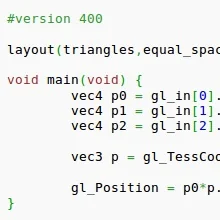Apple Designs New File-System To Succeed HFS+

While many hoped ZFS would eventually replace HFS+ as the default file-system on OS X (now known as macOS), it doesn't look like Apple is pushing ZFS any further. Instead, Apple has been designing its own original file-system. It's described in technical documentation as "a new, modern file system for iOS, OS X, tvOS and watchOS. It is optimized for Flash/SSD storage and features strong encryption, copy-on-write metadata, space sharing, cloning for files and directories, snapshots, fast directory sizing, atomic safe-save primitives, and improved file system fundamentals."
CoW, snapshoting, strong encryption, and more! Sounds much better than the aging HFS+ and in line with features being offered by ZFS, Btrfs, and friends. I haven't seen any transparent file-system compression yet mentioned for Apple File-System.
In terms of APFS encryption capabilities, "APFS supports encryption natively. You can choose one of the following encryption models for each volume in a container: no encryption, single-key encryption, or multi-key encryption with per-file keys for file data and a separate key for sensitive metadata. APFS encryption uses AES-XTS or AES-CBC, depending on hardware. Multi-key encryption ensures the integrity of user data even when its physical security is compromised."
More details on APFS can be found via this pre-release documentation. APFS is scheduled to ship as a tech preview feature in macOS Sierra later this year while its official debut doesn't look like it will happen until at least 2017. It will be interesting to see if APFS is open-source or not and ultimately gets supported by the Linux kernel or FUSE.
101 Comments

